The bass guitar is one of the most iconic instruments of the Rock music world.
From the Beatles, to bands like Metallica, every band has a bass player.
One of the beautiful things about this is that there are so many different brands of bass guitars.
I did some digging around into the bass guitar world and today we’ll get into 7 of the best bass guitar brands:
- Yamaha.
- Fender.
- Ibanez.
- Hofner.
- Washburn.
- Rickenbacker.
- and Music Man.
Yamaha

Founded in 1887, Yamaha originally did not make guitars.
They started off in pianos and organs and didn’t begin making guitars until the 1940’s.
In the 1960s, demands for more and cheaper guitars increased enormously, and Yamaha met the challenge by releasing their G series of guitars, produced in their Hamamatsu factory, at a starting price of $49.
Around this same period is when Yamaha began to make their first bass guitars.
Though they were produced and distributed in Japan, these newer bass guitars were widely popular in the US.
The bridge, vibrato, and pickups were all an original design by Yamaha and their bass guitars had a very distinct appearance.
These guitars picked up popularity in Japan in the 1960s and are still widely popular there today.
In 1972 the first Yamaha electric guitars came to America, and these were the SG-40 and the SG-45.
Surprisingly, they weren’t popular, so Yamaha offered to make a custom guitar for Carlos Santana in 1975, the model SG-175.
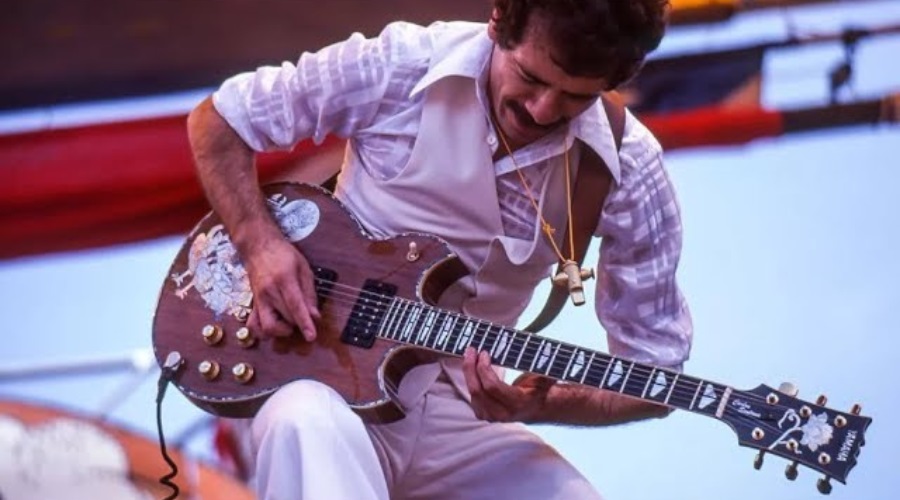
Santana loved his Yamaha and used it exclusively in the years that followed.
This gave Yamaha a huge popularity boost and throughout the 1970s and 80s, many other popular artists switched over to Yamaha for their guitars, including names like Paul Reynolds, Bob Marley, and John McLaughlin.
Most other companies in the eighties went to a Super Strat design; Yamaha did not. Instead, Yamaha stayed with their classic look and introduced their 5-string bass the BB-5000 in 1984.
Then, in 1987 their APX models made their debut with drastic changes to the pickups and preamps.
This design was extraordinarily popular in the late 1980s to early 90s.
Then in 1989, Yamaha finally made their version of the Super Strat models after listening to requests by musicians.
This prompted Yamaha to create their North Hollywood facility where the Weddington and Pacifica Guitars were made – and are still made today.
Yamaha’s ability to provide reasonably-priced, reliable, and sturdy guitars is what puts them in the top 7 guitar brands and it’s what’s kept them in business for over 50 years.
Fender

Our next spot on the list goes to Fender, founded in 1938 by Clarence Leonidas Fender.
He had owned a radio shop, which he sold in 1946 in order to give his full attention to guitar building.
That decision paid off when his company had a firm place in the music industry by 1949.
In 1950, 50 Esquires were made and went through two name changes to eventually be called Telecasters.
Each one sold for almost $190.
One year later, the repair shop that Fender also owned was closed so that Fender’s focus could be solely on building solid-body Guitars.
This is when his Precision bass was born. In 1954 Fender made his most popular guitar ever. The Stratocaster.
This model sent the popularity of Fender’s company skyrocketing and earned him millions of dollars. However this model still underwent many changes over the years.
The Fender Mustang was introduced in 1964, the same year that Fender began to look for a buyer for his company due to health issues, and in 1965 Columbia Distribution Corp. bought Fender’s company for $13 million.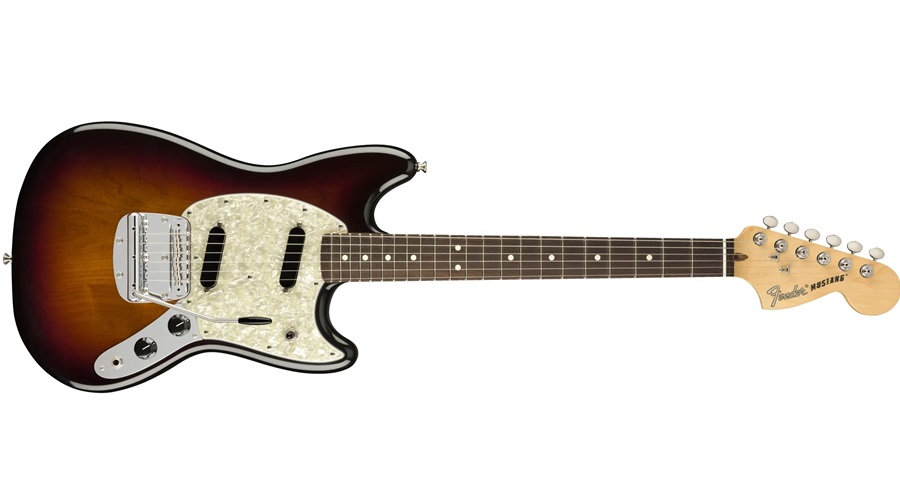
After the CBS takeover, many long-term employees left the company, including the former vice president and Don Randall, who was previously Fender’s partner.
Many felt that the quality of the guitars had taken a back seat.
As Fender’s quality and popularity slipped away, CBS brought in a few top people from (you guessed it) Yamaha in order to turn the tables around for Fender’s reputation.
Production on guitars practically came to a halt while they focused on reissuing the high-quality Guitars from pre-CBS takeover.
Twenty years after its acquisition, CBS sold the company to William Schultz in 1985. This was the man who had been recruited from Yamaha. However, they did not sell him the patents, the US facility, or the machinery.
As a result, only Japanese models could be made and sold. At this point, the company was over $11 million in debt.
In 1991, four years after opening a new facility in California, Fender moved their headquarters to Arizona, and Fender’s business had a huge turnaround and hit a global scale.
The company is still producing guitars today, even though all of the original owners have since passed away. Nowadays, Fender bass guitars are still quite popular and considered to be iconic instruments.
Ibanez

Ibanez is a Japanese company that was founded in 1908, and is owned by the Hoshino Gakki Co., Ltd.
Aside from bass guitars, this company also sells ukuleles, banjos, mandolins, and instrument accessories.
From the 1960s to the 70s, Hosino Gakki was selling what were basically copies of other guitars until a lawsuit came.
But by then they had already established themselves in the industry.
Hoshino Gakki didn’t begin using the name Ibanez until 1929 after importing a Spanish guitar model that was incorporated into the company, at which point they then began making Spanish guitars.
Ibanez was mostly copying European designs all the way up to the 60’s when they began to copy American designs like Fender (whom we’ve already covered), Gibson, and Rickenbacker.
Ibanez was, of course, sued for these copies. In 1977, they encountered another lawsuit, this time by Gibson.
After settling the suits outside of court, Ibanez finally abandoned copying American guitars, and finally came up with their own guitar models, the Iceman and the Roadster.
They’ve been producing their own guitars ever since. In the 1980s, Ibanez produced their RG series and entered the SuperStrat market.
They also expanded their guitars to include semi-acoustic, nylon, and steel-string acoustic guitars.
All of Ibanez guitars were made exclusively in Japan until the late 1980s when they expanded to other Asian countries.
Ibanez began modernizing their guitars in the 1980s and has since been in steady business with their modern and sturdy electric guitars.
Hofner

Karl Hofner started out in 1887 selling violins, a far cry from bass guitars.
His reputation for making high-quality instruments gained him footholds all over Europe, and after WW1 Hofner brought his sons into the business with him.
Violas Celli and double basses were added to Hofner’s company to sell and in the 1930s Hofner began making guitars.
The first models called Schlaggitarren had steel strings and an arched top and back.
Exporting was drastically reduced during WW2 and Hofner began producing wooden items for the Army.
After the war, Hofner’s family was greatly unhappy with the new administration for the company since it was taken over by State administrators.
The family moved to West Germany and began their company over from scratch.
They had to operate on a barter system instead of a monetary system, which made production much more difficult, and their new factory wasn’t up and running until 1950.
Their reputation was slowly rebuilt and they once again had worldwide sales. Production of guitars increased in the 1950s and with that, the model range for guitars also increased.
With the rise of Rock music, Hofner found himself needing to expand his factory to accommodate the demand for guitars – which by now accounted for over 50% of production.
By the 1960s, Hofner was producing his Arch top guitars along with semi-acoustic and bass guitars.
Hofners newest issue was that painting the guitars was taking too long, so another new facility was born and vinyl-covered guitars were released.
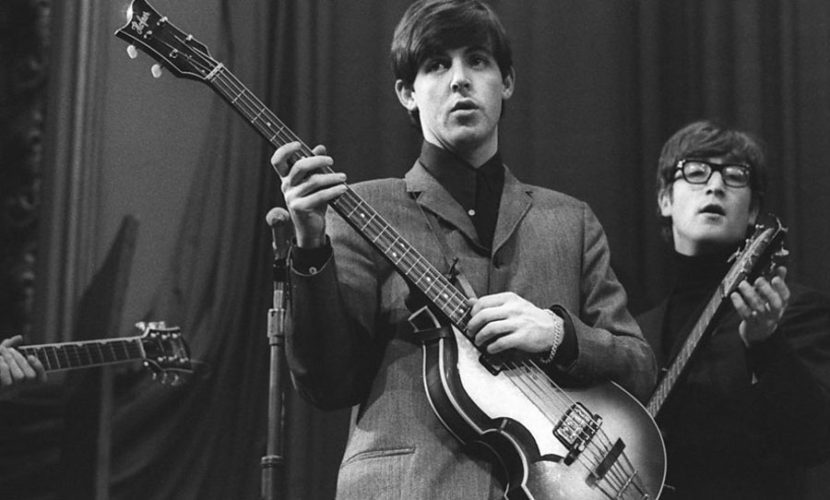
Paul McCartney bought a violin bass guitar from Hofner in 1961 and used that iconic model for over 50 years, changing the music culture drastically.
But, from 1965-1970 Hofner saw a decline in sales when the import restrictions on American items were lifted.
To counter their drop in guitar sales, Hofner increased their production of orchestral instruments once again.
Hofner’s company couldn’t compete though, and in 1994 the Hofners sold the company to Boosey and Hawkes, a major parent music company.
However, this wasn’t enough to save the Hofner company and in 1997 all production was moved to Hagenau.
In 2003 Hofner was sold to TMG (The Music Group).
By 2004, Hofner had been sold once again, this time to Klaus Scholler, who’d been the general manager at Hofner since 1995.
He invested in the overseas manufacturing facility and business has once again increased for the company.
Today the company continues to produce high-quality instruments using natural tone woods and environmentally-friendly finishes.
Hofner still has high quality, strong values, and a surprisingly strong business, despite all of the change and hardship over the company’s 130 years of business.
Washburn
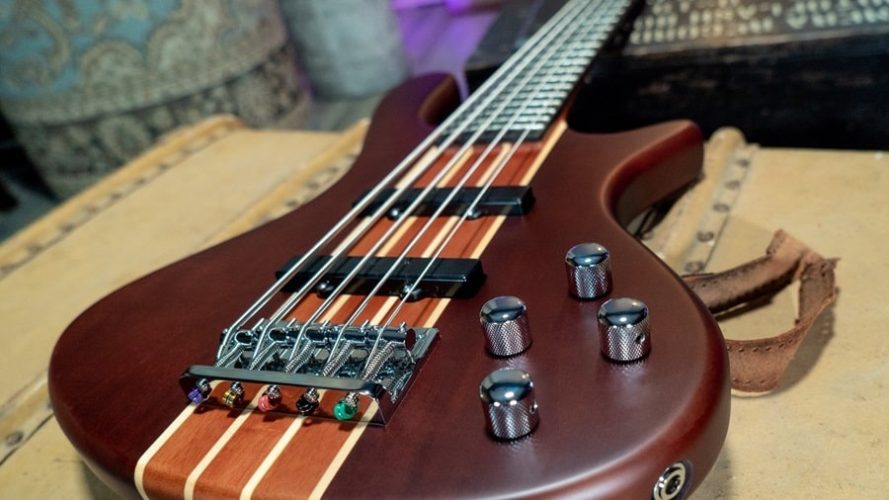
Another timeless company, Washburn takes the number 5 place on our list.
Beginning in 1883, Washburn’s goal was to make professional instruments priced for musicians without professional pay.
Aside from guitars, Washburn also produced mandolins and banjos. By 1889 Washburn was the largest mandolin producer in America.
In 1912 Washburn produced the Lakeside Jumbo, the first dreadnought guitar. And although C.F. Martin & Company is credited as developing the dreadnought guitar, their release occurred in 1916, 4 years after Washburn’s Jumbo.
By 1930, Washburn had merged with Tonk Brothers, and released the Solo Deluxe. This was the precursor to the auditorium body shape which is standard today.
In the 1970s Washburn created their Wing series, their first electrical model.
The 1980s and 90s saw Washburn’s hiatus from electric guitars with the Festival series, which was an acoustic that brought intimacy back to the music industry.
Changing hands once again in the 1990s, Washburn no longer produces here in America, instead production is mostly in China and Indonesia.
In fact, most modern instruments are not even built by the company itself anymore, with a few exceptions being the W series released in 1974 and the D series from 2002-2008.
Rickenbacker
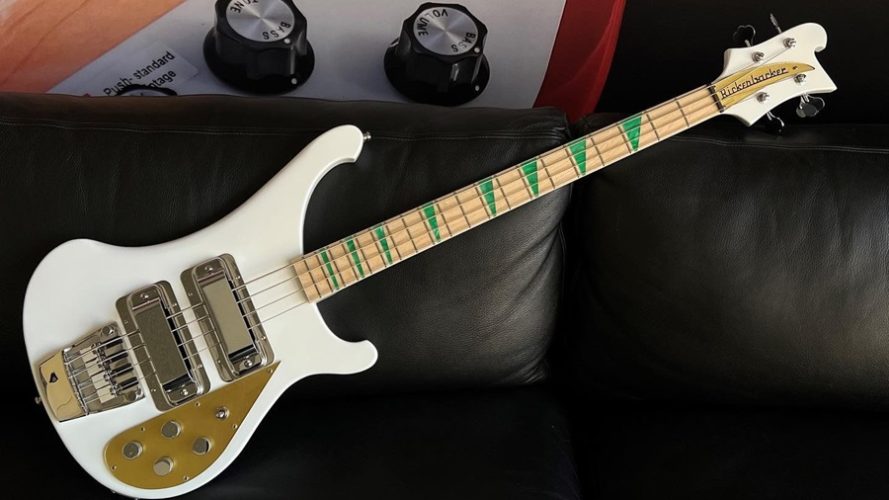
Number six on our list of top 7 bass guitar brands is Rickenbacker which was founded in 1931 by Adolf Rickenbacker and George Beauchamp, but their story really begins in the 1920s.
Beauchamp was searching for a new, louder guitar and discovered a successful prototype, made by the Dopyeras.
Beauchamp loved the prototype and wanted to create a joint manufacturing company with them. He introduced the prototype to Ted Kleinmeyer at a party, who was so impressed he gave Beauhamp $12,000 on the spot.
Production of the guitars started the next day. A factory was purchased right next to Rickenbacker who became the company’s engineer.
But by 1928 the Dopyearas and Beauchamp clearly couldn’t work together. They were about as compatible as oil and water.
Then Keinmeyer’s habit of spending more than he could make became a huge problem for Beauchamp.
They Dopyera brothers quit the company and formed their own, but maintained their national stock, later winning more in a court settlement.
The nails in Beauchamp’s coffin came when Kleinmeyer sold his interest in the company to none other than one of the Dopyeara brothers, who promptly fired Beauchamp.
Undeterred, Beauchamp then experimented with PA systems and made a single string test guitar that put him on track for the future.
After months of experimentation, Beauchamp enlisted Harry Watson and Adolf Rickenbacker to help him make his new electric guitar, which they named the frying pan.
The trio became the Ro Pat-In corporation and then changed the name to Electro String.
They called the instruments Rickenbackers because it was a famous name, thanks to Adolf’s cousin, the WW2 flying ace Eddie Rickenbacker.
And it was easier to pronounce than Beauchamp (pronounced Beechum). But the new company still had obstacles.
For one, their timing was awful! The 1930s was the middle of the Great Depression and almost no one had extra money to spend on guitars.
Most musicians couldn’t see the potential in electrics, having no experience with it, and the patent office didn’t even know if the frying pan was a musical instrument or an electrical device!
Yikes! On top of all of that, other companies were trying to get electrical guitars on the market, too, so there’d be a battle of patents occurring.

The 1930s Lap Steel Rickenbackers were the most popular and were available until the 1950s.
In 1935 the Spanish Bakelite model B became the most popular. Though it wasn’t entirely solid wood, it eliminated acoustic feedback that was common in those days.
In 1940 Beauchamp sold his shares in the company and went deep-sea fishing, where he had a heart attack and died.
In 1953 Rickenbacker sold the Company to F.C. Hall and the modern era of Rickenbackers began.
Hall released the Combo 600 and 800 series, and in 1956 the Combo 400 came out, which had a butterfly-style body.
The 6-string Capri models from 1958 were easily the most popular, however. There were three categories of Capris, each sporting a different body.
When The Beatles captured the world in the 1960s, The Rickenbacker name made history since The Beatles used Rickenbacker guitars for most of their early career.
Paul McCartney switched from his Hofner to the Rickenbacker 4001S.
Rickenbacker went international after that and by 1964 they needed a new factory with increased production capability.
Today the Rickenbacker company still makes new guitars, but they also reissue older models that retain the spirit and quality the Rickenbacker company has had from the very beginning.
Music Man

For the last guitar brand on our list, we have the Music Man Company.
Music Man began in 1971 and was founded by Forrest White and Tom Walker, who were previously employed at Fender.
Walker needed funding in the beginning and – with a non-complete cause firmly in place from the sale of Fender to CBS – Fender became a silent partner.
Fender stayed on with Walker even after his retirement but didn’t like their original company name which was Tri-sonix Inc, so the name was changed to Musitec, and then later changed to Music Man in January 1974.
Their first amplifier was called the sixty-five. It was a hybrid of solid and tube technology and designs for it took up 15 of their 28-page catalogue in 1976.
That same year, the Stingray1 and the Stingray bass appeared. It was electronically innovative and sold well but it was not the prettiest look and was not very successful.
A few more models were made and also sold poorly, and by 1979 Fender had enough and cut ties with Music Man.
By 1984 Music Man’s assets were sold and production ceased.
Earnie Ball purchased the Music Man company and revived it, coming out with a number of new models including the:
- 1986 Silhouette.
- 1987 Steve Morse model.
- Eddie Van Halen Signature Axis model in 1990.
- The John Petrucci 6 and 7 string guitars in 1999.
- and the bass models, as well as the 1987 Stingray 5, the 1993 Sterling Bass, and the 2003 Bongo bass.
Thanks to Ernie Ball, the Music Man company is thriving and still produces high quality guitars today.
Best Bass Guitar Brands: Conclusion
The music industry is always changing and the companies that produce the instruments have to change with it if they want to survive.
These 7 companies have stood the test of time and overcome many stressful periods that could have easily destroyed them.
But they are still around and have maintained the integrity and quality of their instruments, earning them all a place in the top 7-Bass Guitar Brands.







